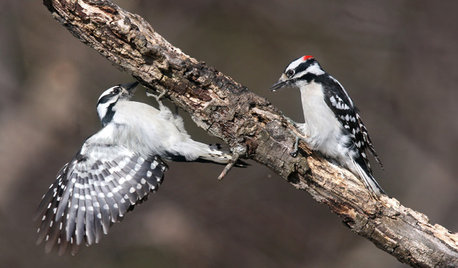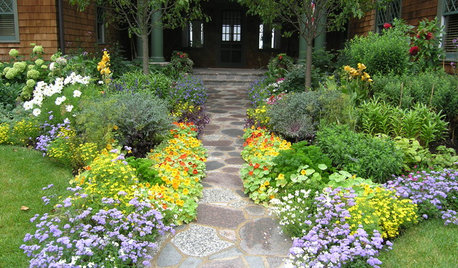Please help me identify what's killing my plants
eukaryote
16 years ago
Related Stories

FLOWERS AND PLANTSHelp Monarchs and Other Butterflies by Planting Common Milkweed
Summer-blooming Asclepias syriaca is an important larval host plant for the monarch butterfly and attracts a number of pollinating insects
Full Story
GARDENING GUIDESGreat Design Plant: Silphium Perfoliatum Pleases Wildlife
Cup plant provides structure, cover, food and water to help attract and sustain wildlife in the eastern North American garden
Full Story
MOST POPULARThe Perfect Houseplant for People Who Kill Houseplants
If you can fill a jar with water, you can keep golden pothos vine happy — and it will pay you back with cleaner air and a greener home
Full Story
GARDENING GUIDESGreat Design Plant: Ceanothus Pleases With Nectar and Fragrant Blooms
West Coast natives: The blue flowers of drought-tolerant ceanothus draw the eye and help support local wildlife too
Full Story
HOUSEPLANTS8 Houseplants You Can't Kill
They're forgiving and let you forget. Houseplants don't get any easier than this
Full Story
GARDENING FOR BIRDSBackyard Birds: How to Identify Two Common Woodpeckers
Downy and hairy woodpeckers have similar coloration and behavior. But there are two big differences that separate them
Full Story
GARDENING GUIDESGreat Design Plant: Snowberry Pleases Year-Round
Bright spring foliage, pretty summer flowers, white berries in winter ... Symphoricarpos albus is a sight to behold in every season
Full Story
GARDENING GUIDESPathway Plantings That Please the Senses
Add some color, life and intrigue beside your sidewalk with these 7 suggestions
Full Story
LANDSCAPE DESIGNNative Plants Help You Find Your Garden Style
Imagine the garden of your dreams designed with plants indigenous to your region
Full StorySponsored







morz8 - Washington Coast
eukaryoteOriginal Author
Related Professionals
Beachwood Landscape Contractors · Bristol Landscape Contractors · Coeur d'Alene Landscape Contractors · Costa Mesa Landscape Contractors · Eustis Landscape Contractors · Gurnee Landscape Contractors · Hannibal Landscape Contractors · Kailua Landscape Contractors · La Mirada Landscape Contractors · New Providence Landscape Contractors · Pleasant Grove Landscape Contractors · Thonotosassa Landscape Contractors · Waltham Landscape Contractors · Wanaque Landscape Contractors · Wentzville Landscape Contractorsmorz8 - Washington Coast
eukaryoteOriginal Author
morz8 - Washington Coast
eukaryoteOriginal Author
rhodyman
eukaryoteOriginal Author
marshavogt_yahoo_com
rhodyman
rhodyman
Jon 6a SE MA